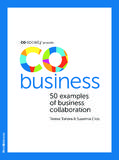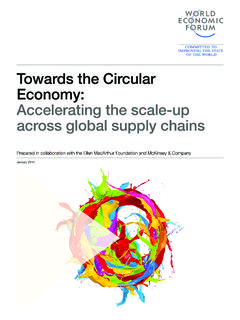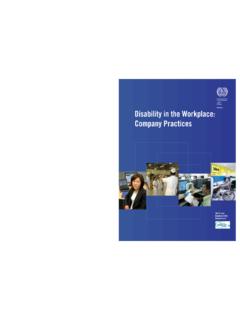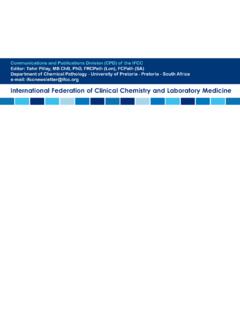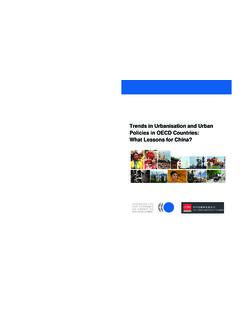Transcription of Corporate Governance and Business Integrity - …
1 Corporate Governance and Business IntegrityA Stocktaking of Corporate Practices Corporate Governance AND Business Integrity A Stocktaking of Corporate Practices Corporate Governance AND Business Integrity : A STOCKTAKING OF Corporate PRACTICES OECD 2015 3 Foreword This report represents the results of a stocktaking exercise conducted under the OECD Trust and Business Project (TNB Project). The report: i) highlights the extent to which companies (and especially their boards and executive management) are organising themselves in order to integrate considerations of Business Integrity into their Corporate Governance frameworks, strategy, and operations; and ii) assesses what factors may influence Business decisions to implement Business Integrity measures, including decisions requiring board-level consideration and approval. The report concludes with a summary of these findings.
2 While specific Integrity risks are addressed in this report, the focus is on the role of the board and senior management and the extent to which Business Integrity considerations are integrated into their overall oversight of a corporation s strategy and operations. This report was prepared by the Secretariat to the OECD Corporate Governance Committee on the basis of research undertaken from January to April 2015 and a literature review, and was developed in co-operation with the Secretariat of several other OECD bodies charged with overseeing implementation of a number of OECD recommendations and guidelines relevant to Business Integrity . These include the Working Party on State Ownership and Privatisation Practices, the Competition Committee, the Working Party on Responsible Business Conduct, the Working Group on Bribery in International Business Transactions, and the Committee on Financial Markets, all from the Directorate for Financial and Enterprise Affairs.
3 The report was drafted by Mary Crane-Charef, Leah Ambler and H ctor Lehued , under the supervision of Mats Isaksson and Pierre Poret in the OECD Directorate for Financial and Enterprise Affairs. TABLE OF CONTENTS Corporate Governance AND Business Integrity : A STOCKTAKING OF Corporate PRACTICES OECD 2015 5 Table of contents Acronyms and abbreviations .. 9 Preface .. 11 Executive summary .. 13 Chapter 1. Introduction .. 15 Chapter 2. The need to focus on Business Integrity .. 19 The importance of Business Integrity to today s economy .. 20 Incerasing cost of misbehaviour to firms .. 21 Losing trust .. 25 The Business 26 A new approach .. 28 Chapter 3. Business Integrity in practice .. 29 Business Integrity : the view from the top .. 31 Decision to create a Business Integrity function .. 37 Organisation and scope of the Integrity function.
4 37 Operationalising the Integrity 41 Oversight by board committees .. 45 Integrity training .. 47 Reporting on Integrity .. 48 Who reports to whom .. 48 Frequency of reporting .. 50 What is reported .. 52 Reviewing Business Integrity policies .. 53 Communicating on Business Integrity .. 56 Special considerations for SOE 57 Special considerations for SMEs .. 58 Chapter 4. Drivers of effective implementation of Business Integrity .. 61 Internal measures .. 63 Internal reporting mechanisms and protection from reprisals .. 63 Linking Integrity to incentives .. 65 Sectorial initiatives .. 67 Collective action .. 68 Certification .. 70 External factors .. 71 Investors and shareholders .. 71 Personal director liability .. 73 Customer/client-supplier pressure .. 74 Peer benchmarking .. 74 TABLE OF CONTENTS 6 Corporate Governance AND Business Integrity : A STOCKTAKING OF Corporate PRACTICES OECD 2015 Employee representation.
5 75 Sustainability reporting 75 Government actions .. 77 Enforcement .. 78 Compliance incentives .. 79 Self reporting and voluntary disclosure .. 84 Settlement arrangements .. 84 Specific instances mechanism under the OECD MNE Guidelines .. 85 Corporate Governance codes .. 85 High-level reporting mechanism (HLRM) and Business ombudsmen .. 86 Chapter 5. Assessment: Implications of the findings .. 87 References .. 91 Annex A. Methodology .. 101 Annex B. Select OECD Standards for Business Integrity .. 103 Corporate Governance and tone from the top .. 103 G20/OECD Principles of Corporate Governance .. 103 OECD Guidelines on Corporate Governance of State-Owned Enterprises .. 105 Responsible Business conduct .. 106 Anti-corruption .. 107 Competition .. 108 Examples of national Integrity practices .. 110 Corporate Governance codes .. 110 Other examples of guidance on Corporate behaviour.
6 111 Tables 1. Perception of prioritisation of Business Integrity categories by companies .. 39 Figures 1. Top 50 Corporate fines, per infraction and year (2001 - 2014) .. 22 2. Level of Corporate management involved in foreign bribery cases .. 24 3. Trust in institutions .. 25 4. Why companies create a Business Integrity function .. 32 6. Estimated Business Integrity budget relative to net sales (FY2014) .. 36 7. Business Integrity budget: investment or expense? .. 36 8. Organisation of the Integrity function .. 38 9. Scope of Business Integrity policy .. 38 10. Obstacles to an effective Business Integrity policy .. 42 11. Mandate of the Business Integrity function .. 42 12. Position of Business Integrity function relative to responsibility .. 43 13. Requirement to implement an internal control and risk management system .. 46 14. Frequency of Business Integrity reporting within the organisation.
7 51 15. Consultation of Business Integrity function in project development process .. 51 16. Business Integrity and board decisions .. 53 17. Frequency of review of the Business Integrity policy .. 55 18. Audit or evaluation of the company s Business Integrity function .. 55 TABLE OF CONTENTS Corporate Governance AND Business Integrity : A STOCKTAKING OF Corporate PRACTICES OECD 2015 7 19. Main reasons for seeking to detect, prevent and address misconduct .. 62 20. Who receives internal whistleblower reports within the company .. 64 21. Company subject to media allegations or law enforcement proceedings .. 79 Boxes 1. Integrity as a question of long-term success .. 33 2. Making the Business case for the Business Integrity function .. 34 3. Engaging the board on Business Integrity .. 34 4. Setting the risk appetite .. 37 5. Making the link between compliance and Business .. 44 6.
8 Integrating risk management and internal control .. 44 7. Board structures that challenge effective oversight .. 46 8. Reporting to the board .. 49 9. Should the compliance and legal functions be integrated or separated? .. 50 10. Going beyond formalistic board updates on Integrity .. 52 11. Reporting to board sub-committee .. 52 12. Monitoring implementation of an Integrity programme .. 54 13. Communicating Integrity .. 56 14. The risk challenge and remuneration setting .. 65 15. Linking performance to compliant behaviour .. 66 16. Award-winning collective action: The Maritime Anti-Corruption Network .. 69 17. Investor Impact: The Principles for Responsible Investment Initiative .. 73 18. King code of Governance .. 111 19. Extracts from United States Sentencing Commission Guidelines Manual (2014) .. 112 20. Canadian Competition Bureau: Benefits of Corporate Compliance .. 114 ACKNOWLEDGEMENTS 8 Corporate Governance AND Business Integrity .
9 A STOCKTAKING OF Corporate PRACTICES OECD 2015 Acknowledgements This report was prepared by the Secretariat of the Corporate Affairs Division of the OECD Directorate for Financial and Enterprise Affairs (DAF) in collaboration with members of the Secretariat of all other DAF Divisions and a number of other Directorates (including the Development Co-operation Directorate, the Public Governance and Territorial Development Directorate, the Legal Directorate, the OECD Sherpa Office and the Centre for Tax Policy and Administration), as well as benefiting from consultations with Delegates from various OECD bodies including the OECD Corporate Governance Committee (CGC), the Working Party on State Ownership and Privatisation Practices (WPSOPP), the Competition Committee (COMP), the Working Group on Bribery (WGB), the Working Party on Responsible Business Conduct (WPRBC), and the Committee on Financial Markets.
10 A few Delegates from OECD countries also greatly contributed to this report with their comments and by joining an informal Task Force that has helped guide the TNB Project. The report also benefited from important contributions from the Business and Advisory Committee to the OECD (BIAC), which facilitated participation of its member companies in the project, and from the Trade Union Advisory Committee to the OECD (TUAC). Other contributing organisations include: Advanced Medical Technology Association (AdvaMed) and MedTech Europe, Compliance Week, FCPAm ricas blog, International Bar Association (IBA), Journal of Business Compliance, Principles of Responsible Investment (PRI), and Society of Corporate Compliance and Ethics (SCCE). Other contributing companies and organisations that made specific contributions and agreed to be listed include: AB InBev, Balfour Beatty, Cisco, Deutsche Telekom, ENI, Ethic Intelligence, International Federation of Accountants (IFAC), Maersk, Neville Tiffen & Associates, Novartis, Siemens, Springer Nature/Macmillan Publishers and Unilever.










